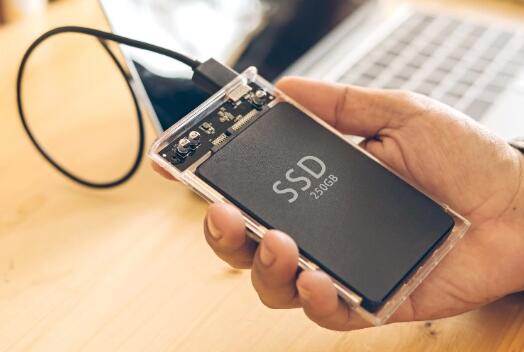Restoring deleted files from an SSD (Solid State Drive) can be a complex process, but it’s definitely possible in many cases, provided you act quickly and follow the right steps.
1. SSD Data Loss
Before we jump into the recovery process, it’s crucial to understand why files can be lost from an SSD in the first place. Unlike traditional Hard Disk Drives (HDDs), SSDs use flash memory to store data. They are faster, more durable, and consume less power, but the way they manage data is different. Here are the main causes of SSD data loss:

This is the most common cause of file loss. You may have accidentally deleted files or emptied the Recycle Bin without realizing it.
1.1. Accidental Deletion
1.2. Drive Corruption
SSD corruption can occur due to software crashes, power failures, or improper ejection of the drive from the computer. This can result in inaccessible or lost data.
1.3. Physical Damage
Physical issues such as a dropped SSD, damaged connectors, or other hardware malfunctions can lead to data loss.
1.4. Firmware Issues
Firmware bugs or corruption can prevent data from being accessed or cause it to disappear altogether.
1.5. TRIM Functionality
When you delete data from an SSD, the TRIM command automatically removes it from the storage cells to free up space. This is a feature that improves SSD performance, but it makes recovery much more difficult, as the deleted files are wiped from the drive entirely, making them harder to restore.
2. Does TRIM Impact SSD Recovery?
The TRIM command is a double-edged sword. On the one hand, it boosts performance and longevity by making it easier for the SSD to handle new data. However, it can make data recovery more challenging after files have been deleted. When TRIM is enabled, deleted files are marked as no longer in use, and their data blocks are immediately cleared. This essentially makes the data unrecoverable.
That said, not all SSDs have TRIM enabled by default, and if you catch the issue early, recovery may still be possible. It’s important to disable TRIM if you plan to attempt data recovery, as this could potentially save your chances.
3. How to Recover Deleted Files from an SSD
If you’ve accidentally deleted files or are facing data loss due to another issue, don’t panic. There are several methods you can try to restore your files from an SSD.
3.1. Stop Using the SSD Immediately
When you realize that files have been deleted or lost, stop using the SSD immediately. Writing new data to the drive could overwrite the sectors where the deleted files are stored, making recovery much more difficult or impossible.
3.2. Check the Recycle Bin
Sometimes, deleted files are simply moved to the Recycle Bin (Windows) or Trash (macOS). It’s always worth checking here first.
Windows: Open the Recycle Bin, locate the deleted files, right-click, and select “Restore.”
macOS: Open Trash, right-click the deleted files, and choose “Put Back.”
3.3. Restore from Backups
If you have a backup of the lost files, restoring from it is the fastest and safest way to recover them. This could be from:
Cloud backups (Google Drive, Dropbox, OneDrive, etc.)
Local backups (external hard drives, NAS devices, etc.)
Time Machine (for macOS users)
If you’re unsure about whether you have a backup, it’s worth checking your backup software or service for the lost data.
3.4. Using Data Recovery Software
Panda Assistant’s powerful recovery algorithms can restore files from a variety of situations, including accidental deletion, formatted drives, and system errors. Additionally, it supports file recovery from damaged or corrupt storage devices, which can be crucial when dealing with critical data loss. With its robust feature set and ease of use, Panda Assistant is a reliable and efficient choice for anyone in need of data recovery, offering peace of mind in situations of unexpected data loss.
4. Precautions to Avoid Future Data Loss
Once you’ve successfully recovered your deleted files, it’s important to take steps to avoid data loss in the future. Here are some tips:
4.1. Regular Backups
Ensure that you have regular backups of important files. Use cloud services like Google Drive, Dropbox, or iCloud, or set up local backups with an external drive or a NAS device.
4.2. Use SSD Health Monitoring Tools
Regularly check the health of your SSD using software like CrystalDiskInfo or SSD Life. These tools can alert you to potential issues with the drive, helping you avoid unexpected failures.
4.3. Disable TRIM (If Needed)
If you plan to perform data recovery, consider disabling the TRIM command temporarily to improve your chances of recovery. Be sure to re-enable it once the recovery process is complete.
4.4. Use Reliable Software
To avoid accidental file deletion, make sure you’re using reliable software and tools for managing your files. Many programs allow you to recover files immediately after deletion, giving you more time to recover them.
About us and this blog
Panda Assistant is built on the latest data recovery algorithms, ensuring that no file is too damaged, too lost, or too corrupted to be recovered.
Request a free quote
We believe that data recovery shouldn’t be a daunting task. That’s why we’ve designed Panda Assistant to be as easy to use as it is powerful. With a few clicks, you can initiate a scan, preview recoverable files, and restore your data all within a matter of minutes.
Subscribe to our newsletter!
More from our blog
See all postsRecent Posts
- How to restore pictures from sd card? 2025-02-20
- Professional sd card data recovery 2025-02-20
- How to recover broken sd card data? 2025-02-20










